-
 Korea.net's 24-hour YouTube channel
Korea.net's 24-hour YouTube channel- NEWS FOCUS
- ABOUT KOREA
- EVENTS
- RESOURCES
- GOVERNMENT
- ABOUT US
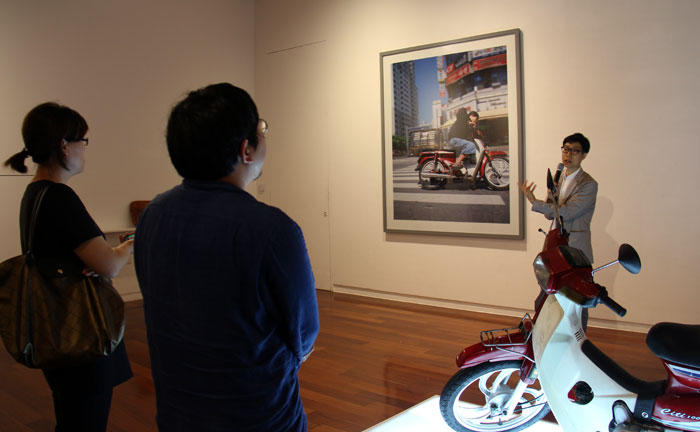
Visitors listen to an explanation from the exhibit organizer (right) about the framed photo of a delivery man on a scooter.
Kimchi, the mildly alcoholic makgeoli rice beverage, mixed rice with vegetables and meat, bibimbap, bowls overflowing with cooked rice, gobongbap, fried chicken and beer and even the scooters used to deliver all these food items to your home. All of these are on display at a recently opened exhibition.
The special “Korean Culture Beyond the Recipe” exhibit, scheduled from Aug. 1 to Oct. 3 at the KF Gallery in Jung-gu District in Seoul, shows aspects of the "food culture," eating and consumption habits, that are found in modern homes. It focuses on the taste of the food, cooking and language, by showing rice, kimchi, makgeoli, bibimbap and the convenience by which all of this can be delivered, via baedal (배달), to your door.
The exhibit particularly focuses on bowls of rice -- bap (밥) -- by showing various forms of rice, such as bibimbap, gobongbap and gimbap, which is rice rolled in seaweed with vegetables and meat. Regarding the bowls of overflowing rice, exhibit organizer, Suh Heon Joo, said, “In gobongbap, we can see people's long-lasting food culture, where they regard rice as being the most important staple and see it as forming a warm emotional bond between people, or jeong (정, 情).”
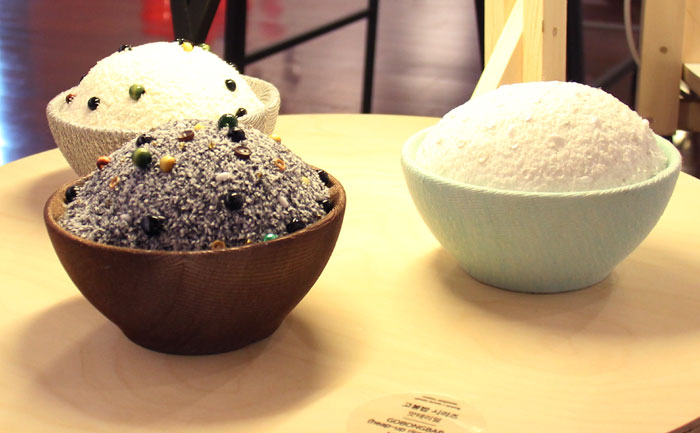
The exhibit shows a table with various overflowing rice bowls. Exhibit organizer said, 'overflowing rice bowls embody traditional food culture, showing how people have been consuming rice as their main staple and how it creates a warm emotional bond.'
Another noticeable display item is a typical scooter that would be used to deliver food, and a photo of a delivery man. Made by Daelim Motors, this model, the Citi 100, is one of the more common models used by delivery men across the country. It can be easily spotted on the streets every day.
Seo said, “Having food delivered is not just for convenience. It is part of modern life's food culture.” Thanks to the development of delivery apps, he added that, “These apps boost people’s recognition of their food culture, which helps it to become part of their daily routine.”
Other interesting items on display include a table setting of fried chicken and beer, a common meal known by the nickname of chimaek. There is also a table setting that includes soju, a distilled alcoholic beverage, beer, white plates with fried dumplings and the common stainless steel square metal delivery box used by many Chinese restaurants.
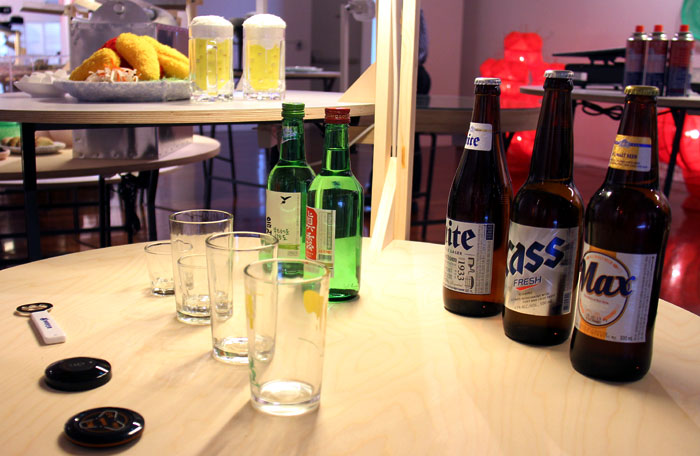
Tables laid out with bottles of beer, soju and pieces of fried chicken reflect modern people's food culture.
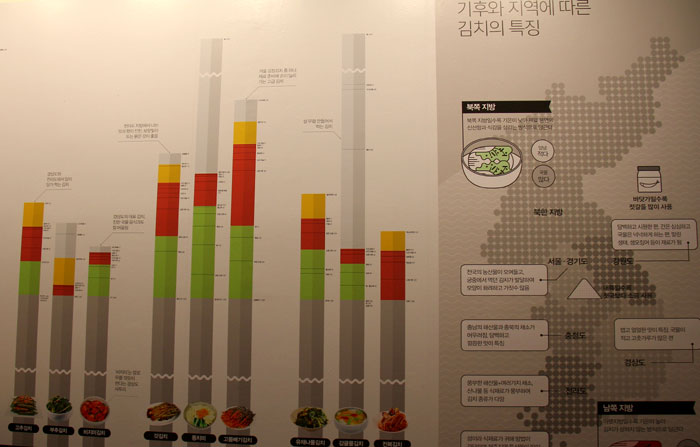
The exhibit lists a few kimchi recipes and local kimchi varieties, and has a map of kimchi dishes from across the country.
Calling kimchi people's "soul food,” the exhibit talks about different kimchi preparation methods, the varieties found across the country and the differences in taste. It also has a “kimchi map” of the country.
The exhibit refers to makgeoli, the mildly alcoholic rice beverage, as, “the most Korean-style alcoholic beverage.” Visitors can learn more about the principles and recipes of the beverage, different varieties of it found across the country and read the stories of former presidents who enjoyed the drink.
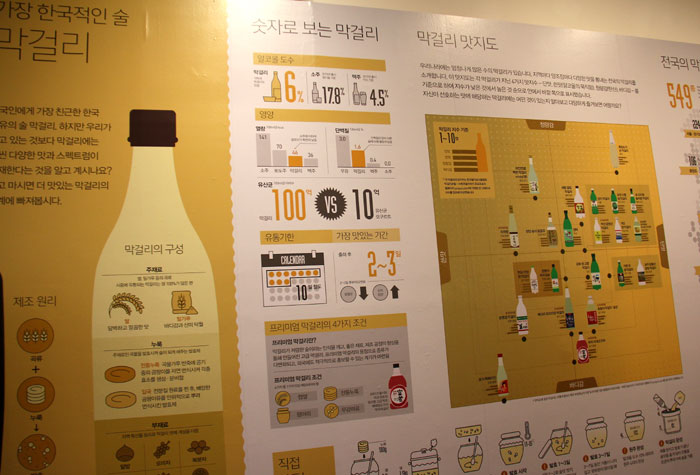
The exhibit says that makgeoli is, 'the most Korean-style beverage.' The display also shows how to make it, different varieties of it and has a ‘makgeoli map’ of the country.
Seo said, “This exhibit is designed to highlight modern society by showing what people actually eat and enjoy. By doing so, we focus on helping people feel empathy for their fellow man, jeong (정, 情), and on community, in which is embedded our food culture.”
For more information, please visit the homepage of the Korea Foundation, with services in seven languages: http://www.kf.or.kr
Article & photos by Yoon Sojung
Korea.net Staff Writer
arete@korea.kr
Most popular
- China warmly welcomes first Korea-born giant panda Fu Bao
- First hearing-impaired K-pop act hopes for 'barrier-free world'
- Novelist Hwang's 'Mater 2-10' shortlisted for Int'l Booker Prize
- Expats could account for 7% of population in 20 years: report
- Nat'l Fire Agency picks 137 elite staff for deployment abroad













